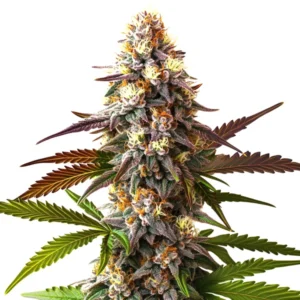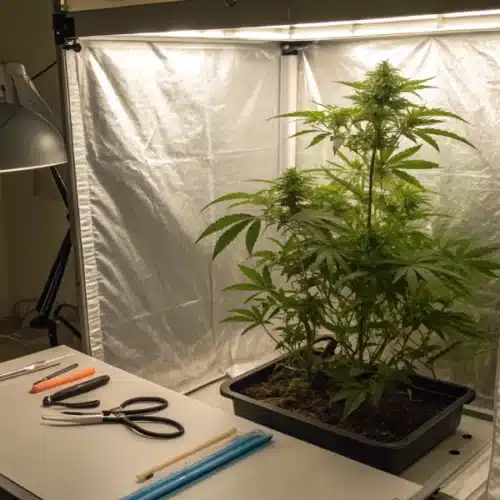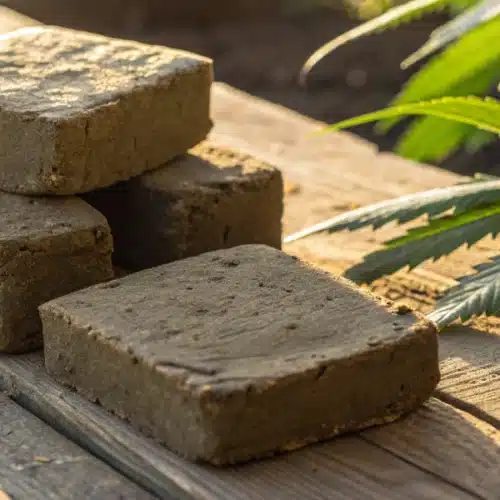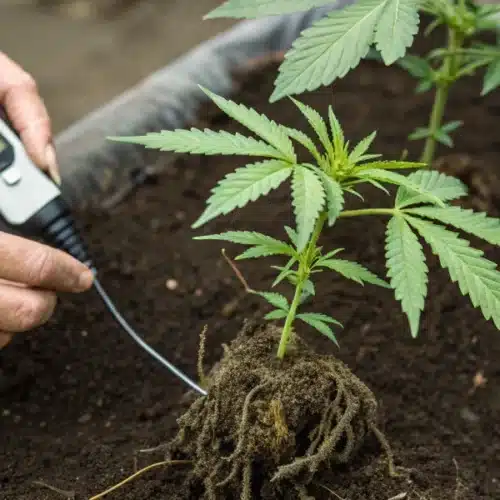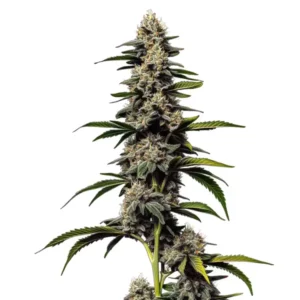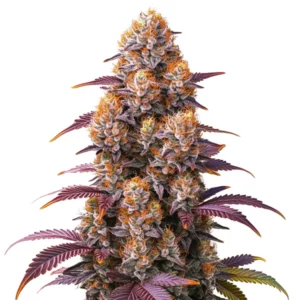Breeding weed involves crossing male and female cannabis plants to create new strains with desirable traits. This allows growers to develop plants with specific characteristics, such as higher THC content, unique flavors, or better resistance to environmental stress. By carefully selecting parent plants with favorable traits, you can produce offspring that carry these attributes, enhancing the quality and diversity of your grow.
In addition to creating unique strains, breeding weed offers the opportunity to explore cannabis genetics on a deeper level. Understanding the dominant and recessive traits in cannabis plants allows growers to manipulate outcomes, ensuring more control over the plant’s final characteristics. This knowledge can lead to the development of strains tailored for specific medical or recreational uses.
Breeding cannabis seeds also offers a sustainable way to preserve your favorite genetics. If you find a strain that performs well in your growing environment, breeding allows you to maintain those traits across multiple generations without relying on external seed sources. This control ensures consistency and the ability to experiment with further genetic improvements.
Tips for Breeding Weed at Home
Choosing Parent Plants
Selecting the right parent plants is key to successful breeding cannabis seeds. It’s important to choose plants that display the traits you want in your future strain, such as size, potency, terpene profile, and resistance to diseases. Understanding the genetics of your plants will help ensure that the desired traits are passed on to future generations.
When choosing parent plants, consider the environmental factors in which they will grow. For example, if you’re growing in a hot, dry climate, selecting parents that are heat-tolerant can help ensure that your offspring will thrive in similar conditions. Similarly, selecting parents with mold resistance is crucial if you live in a humid region. These considerations will significantly impact the success of your breeding project.
Additionally, it’s important to remember that each plant’s genetic background contributes to how offspring will express certain traits. Combining plants with complementary characteristics can enhance the chances of producing a strain that balances both parents’ strengths, creating a well-rounded hybrid that excels in multiple areas, such as yield and potency.
Stabilizing Strains
Stabilizing a cannabis strain ensures that the desired traits are consistently passed down. This process requires several generations of selective breeding, where plants exhibiting the preferred traits are bred together. Stabilizing your strain results in predictable and uniform characteristics across each grow.
One of the biggest challenges in stabilizing a strain is eliminating undesirable traits. During each generation, you may notice that not all offspring display the characteristics you want. It’s important to be selective, discarding plants that don’t meet your standards and only breeding those that exhibit the ideal traits. This process of selective breeding is crucial for producing a consistent and stable strain.
Furthermore, tracking each generation through detailed records will help identify patterns and make it easier to achieve stabilization. By noting which traits appear in offspring and in what combinations, you can make informed decisions about which plants to breed and which to exclude. This meticulous approach will help ensure that future generations maintain the desired characteristics without significant variations.

Promos & Deals
Basic Cannabis Breeding Techniques
Cross-Pollination
One of the simplest breeding methods is cross-pollination, where pollen from a male plant fertilizes a female plant. This can be done naturally or manually by applying pollen to specific flowers. Cross-pollination introduces genetic diversity, often leading to new and unique traits.
When manually cross-pollinating, it’s essential to isolate the plants you are working with. Pollen can spread easily and contaminate other female plants if not properly contained. By using an isolated grow tent or chamber, you can control the breeding process and ensure that only the desired plants are pollinated. This helps prevent accidental cross-pollination that can lead to unwanted results.
Cross-pollination is also a great way to combine the best traits of different strains. For example, you can cross a strain known for its potency with one that has a high yield, creating a hybrid that offers both advantages. Over several generations, this method allows you to develop new strains with highly specific characteristics, tailored to your growing needs or personal preferences.
Backcrossing
Backcrossing involves breeding a hybrid offspring with one of its parent plants to reinforce specific traits. This technique is useful when trying to stabilize qualities like high potency or resilience against pests.
The advantage of backcrossing is that it helps preserve the genetic traits of a parent strain while introducing new characteristics from the offspring. If you have a favorite strain with excellent flavor but want to improve its yield, backcrossing with a high-yielding offspring can enhance the yield while retaining the original flavor profile. Over time, you can refine your plants to maximize both traits.
Backcrossing can also help maintain the genetic integrity of a strain. By reintroducing the parent’s genes into the breeding process, you reduce the genetic drift that can occur when breeding unrelated plants. This ensures that your strain remains true to its original characteristics while improving specific aspects like growth speed or cannabinoid content.
Advanced Cannabis Breeding Techniques
Line Breeding
Line breeding is a technique where plants with a shared ancestor are bred over multiple generations. This helps to stabilize traits, ensuring that future plants reliably express the desired characteristics.
One of the main benefits of line breeding is the ability to create a strain with uniform characteristics, making it easier to predict the final outcome of each grow. Line breeding is particularly effective when you want to maintain specific traits like cannabinoid potency or terpene profiles, which may otherwise be lost through traditional breeding methods.
However, line breeding can sometimes lead to reduced genetic diversity, making plants more susceptible to diseases or environmental stress. To counter this, it’s crucial to maintain a healthy gene pool by introducing genetic diversity at appropriate points during the breeding process. This balance between stability and diversity is key to creating robust, high-quality strains.
Phenotypic Selection
Phenotypic selection involves choosing plants based on their physical traits, such as color, growth pattern, and resin production. By selecting the best-performing plants, breeders can fine-tune their strains to meet specific goals.
This selection process requires careful observation and documentation of each plant’s traits during different stages of growth. By comparing plants within the same generation, breeders can choose those that exhibit the strongest expression of desired traits, such as large buds or high resin production, for future breeding.
In addition to visible traits, breeders should also monitor the plants’ responses to environmental stressors, like temperature fluctuations or pests. Plants that thrive under challenging conditions can contribute valuable resilience to future generations, making the strain more versatile and adaptable to different growing environments.

Breeding Weed for Desired Traits: Potency, Flavor, and More
Breeding weed allows you to develop strains with specific traits, such as potency, unique flavors, or better resistance to pests. By selecting parent plants and refining traits over multiple generations, you can create strains tailored to your preferences.
For example, some breeders may prioritize potency, aiming to produce strains with high THC content for recreational use. Others might focus on CBD-rich strains for medical purposes, looking for specific cannabinoid profiles that provide relief from pain or anxiety. The ability to target certain effects through breeding makes it possible to create strains that meet a wide range of needs.
Breeding weed also opens the door to experimenting with flavors and aromas. Whether you’re aiming for a fruity, citrus-like taste or a more earthy, piney aroma, the right combination of parent plants can lead to truly unique flavor profiles. This customization allows you to craft a one-of-a-kind strain that stands out both in taste and effects.
Benefits of Breeding Your Own Cannabis Strains
Breeding cannabis at home gives you full control over the traits of your plants. Whether you’re seeking high potency, a particular aroma, or medical effects, breeding lets you create a strain that fits your needs. It can also save you money, as you won’t need to buy new seeds for every grow. Additionally, breeding your own plants helps preserve genetics, ensuring your favorite strain’s unique characteristics remain intact.
Another major benefit is the ability to create strains that thrive in your specific growing environment. By selecting parent plants that perform well in your climate, you can produce offspring that are better suited to your local conditions. This can lead to higher yields, faster growth, and more robust plants.
Finally, breeding weed is an educational and rewarding experience. As you experiment with different techniques, you’ll gain a deeper understanding of cannabis genetics and plant biology. This knowledge not only helps improve your breeding efforts but also enhances your overall growing experience, leading to higher-quality plants and a more satisfying harvest.
Common Challenges in Breeding Weed
Legal Restrictions
Before starting a breeding project, make sure to check local regulations regarding cannabis cultivation. Some areas may have restrictions on the number of plants you can grow, which can limit your breeding capacity.
Aside from plant count limits, some regions may also have rules on how cannabis plants are bred, particularly if you’re crossing plants for commercial purposes. Understanding your local legal framework will help you avoid complications and ensure that you can carry out your breeding project without any legal issues.
If you’re breeding weed in a jurisdiction where cannabis cultivation is legal, it’s still essential to follow guidelines related to safety, privacy, and environmental responsibility. This ensures that your breeding project remains sustainable and complies with local ordinances.
Time and Patience
Breeding is a long-term process that requires patience. It can take several generations to create a stable strain, and it may take months or even years to achieve the desired traits.
Throughout the process, you’ll need to monitor each generation closely to track progress and make adjustments as necessary. This level of attention can be time-consuming but is essential for achieving consistent results. The more time you invest in refining your breeding techniques, the more successful your final strain will be.
Moreover, unexpected challenges, such as environmental stress or plant diseases, can slow down your progress. Being prepared for setbacks and having the perseverance to continue breeding through challenges is crucial to achieving your breeding goals.
Breeding weed offers a rewarding opportunity to create strains that meet your exact preferences. By learning the basics of genetics, selecting the right parent plants, and using advanced techniques like backcrossing, you can develop high-quality, personalized strains. While the process requires time and dedication, the satisfaction of creating your own unique cannabis varieties makes it worthwhile.
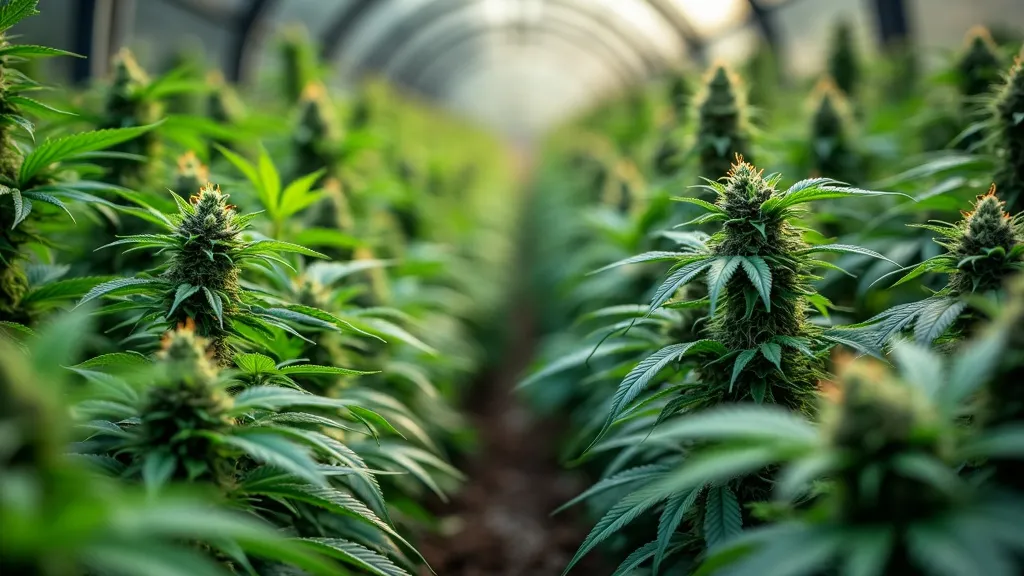
Frequently Asked Questions
Can I breed cannabis at home?
Yes, you can breed cannabis at home, but it’s important to first understand the local laws and regulations surrounding cannabis cultivation in your area. In some regions, you may be limited by the number of plants you can grow, or you may need specific permits or licenses to breed and grow cannabis. Ensure you’re fully compliant with local laws before starting any breeding project.
Additionally, home breeding gives you the freedom to experiment with different strains and traits, making it a great option for personal growers looking to develop custom strains suited to their specific preferences and environment. With some basic knowledge of cannabis genetics and patience, anyone can start breeding at home, even on a small scale.
How long does it take to create a new strain?
Creating a stable new cannabis strain can take anywhere from several months to multiple years, depending on the complexity of the traits you are targeting. Initially, you’ll need to cross-pollinate your selected parent plants, which can take a few weeks during the growing season. Afterward, you’ll need to cultivate the seeds from that cross and observe their traits over multiple generations to ensure stability and consistency.
Each breeding cycle typically takes around 3-6 months, including growing, pollination, and seed production. Achieving a fully stable strain, where the traits consistently appear in all plants, might require several generations, meaning this process can extend over several years. The time investment is considerable, but the reward of creating a unique, high-quality strain makes it worthwhile.
What is backcrossing in cannabis breeding?
Backcrossing is a breeding technique where a hybrid plant is crossed with one of its parent strains to reinforce specific traits. For example, if you develop a hybrid with traits like high THC content but want to ensure these traits are passed down more reliably to future generations, you can backcross the hybrid with the original parent plant that carries the desired characteristic.
This method is particularly useful when you want to preserve key traits, such as potency, flavor, or resilience to pests, while still allowing for some genetic diversity in the offspring. Backcrossing is widely used by breeders to create strains with predictable and stable characteristics, making it easier to maintain certain qualities across multiple grows.
How do I choose parent plants for breeding?
Selecting the right parent plants is one of the most important steps in breeding weed. Look for plants that exhibit the traits you wish to pass down to the next generation, such as high potency, large yields, or specific terpene profiles (flavor and aroma). You should also consider factors like the plant’s resilience to environmental stressors, such as temperature changes, humidity, and pests. Choosing parents that are healthy and vigorous ensures stronger offspring.
Additionally, it’s crucial to understand the genetic background of each parent plant—some traits are dominant, meaning they’re more likely to appear in the offspring, while others are recessive and may not be as easily passed down. By carefully selecting parents with complementary traits, you can maximize the chances of creating a strain that excels in multiple areas, such as potency and disease resistance.
What are the benefits of breeding weed?
Breeding cannabis seeds at home offers several significant advantages. First, it allows you to tailor strains to meet your exact needs. Whether you’re looking for a strain with high THC for recreational use or high CBD for medicinal purposes, breeding lets you create plants with the desired cannabinoid profile. Another benefit is the ability to preserve and improve genetics over time. If you find a strain that thrives in your growing environment, breeding can help you maintain those specific traits across future grows, ensuring consistency.
Moreover, breeding weed can save money in the long run, as you won’t need to continually purchase seeds from external sources. You also get the opportunity to experiment and create entirely new strains, giving you complete control over the cannabis you grow. Finally, the process of breeding is an educational and fulfilling hobby that deepens your understanding of plant genetics and cannabis cultivation.

